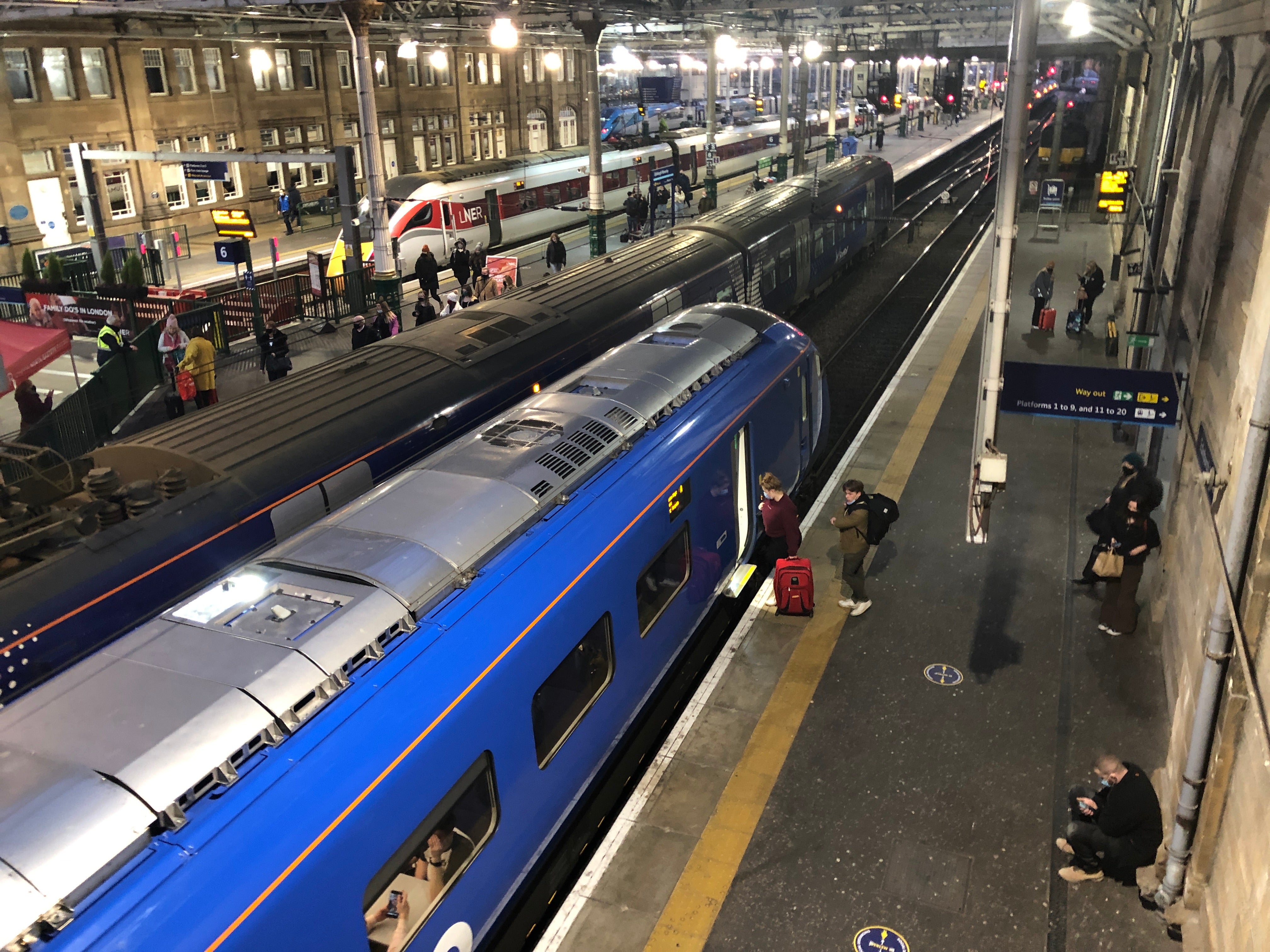Cheap rail fares and lousy flight schedules shift passengers from air to train
Train Talk: Lumo’s success on the East Coast Main Line has been at the expense of the airlines, not LNER

Your support helps us to tell the story
From reproductive rights to climate change to Big Tech, The Independent is on the ground when the story is developing. Whether it's investigating the financials of Elon Musk's pro-Trump PAC or producing our latest documentary, 'The A Word', which shines a light on the American women fighting for reproductive rights, we know how important it is to parse out the facts from the messaging.
At such a critical moment in US history, we need reporters on the ground. Your donation allows us to keep sending journalists to speak to both sides of the story.
The Independent is trusted by Americans across the entire political spectrum. And unlike many other quality news outlets, we choose not to lock Americans out of our reporting and analysis with paywalls. We believe quality journalism should be available to everyone, paid for by those who can afford it.
Your support makes all the difference.A year ago, I took part in a race I really didn’t want to win. At 10.45am, I waved off a train from London King’s Cross station and then sprinted across the road to neighbouring St Pancras. The occasion was the first passenger departure of Lumo, the new Anglo-Scottish operator. I was racing the train to Edinburgh by rail, bus, air, taxi and rail – to see how air compared for speed.
Aboard the shiny blue express was a leading rail expert: Mark Smith, the former British Rail manager who founded the Seat61.com website devoted to international train travel. While he settled back to enjoy the scenery on the East Coast Main Line for the next four-and-a-half hours, I was on a slower, parallel journey on the East Midlands line to Luton Airport Parkway.
The connecting bus and a swift journey through security saw me strapped in for my £25 easyJet flight – to Glasgow, not Edinburgh. The sparse flight schedules from between the English and Scottish capitals made this the only Anglo-Scottish flight that could feasibly get me to the capital in time but added cost, complexity and stress.
The plane flew six miles high and arrived six minutes early. But a ground handling snarl-up meant I had to rely upon a friendly taxi driver to cover the eight miles from the airport to Glasgow Queen Street station in 16 minutes flat.
“It all depends on the lights,” said Michael, who knew a stressed-out traveller when he saw one. They were more green than red, as were the signals on the train that whisked me across to Edinburgh. This was the only joyful part of the journey: with the sun scything through the clouds to sparkle upon the foothills of the Highlands, a cup of tea and some half-decent wifi.
I arrived at Waverley station at exactly 3.15pm: the same moment that Lumo arrived from London King’s Cross, bearing The Man In Seat 61 (who looked a lot more relaxed than me).
On a journey of nearly 400 miles between the two capitals, the train journey wins every time aesthetically. But financially, since easyJet started up in November 1995, the plane has had the edge. According to figures from the Civil Aviation Authority and the railway’s Latest Earnings Networked Nationally Overnight (Lennon), just one-third of passengers between London and Edinburgh travelled by train in April-June 2019, before the coronavirus pandemic.
Not any more. In the corresponding spell in 2022, rail’s proportion had risen to 54 per cent – with July alone hitting 63 per cent. Partly this is down to the airlines’ rubbish schedules over the summer. British Airways and easyJet made hundreds of flight cancellations between London and Edinburgh after realising they couldn’t operate their planned timetables. Plane seats became scarce and expensive. Lumo was on hand to pick up the overflow, and is set to carry its millionth passenger next month.
The average Lumo fare is £37 – good value compared with flying, once surface connections to airports are taken into account, and with a much more generous baggage allowance. On the average train, 84 per cent of seats are filled. Meanwhile, LNER, the well-regarded state-run incumbent on the East Coast Main Line, does not seem to have suffered; it has attracted more passengers back after the Covid crisis than any other franchised train operator.
The government is incentivising a switch from rail to air, by halving Air Passenger Duty on domestic flights from April 2023. But offer fares and schedules that people want, and rail can thrive. We need more reliability, though. I hope whoever turns out to be transport secretary in the Rishi Sunak government takes note.
Join our commenting forum
Join thought-provoking conversations, follow other Independent readers and see their replies
0Comments